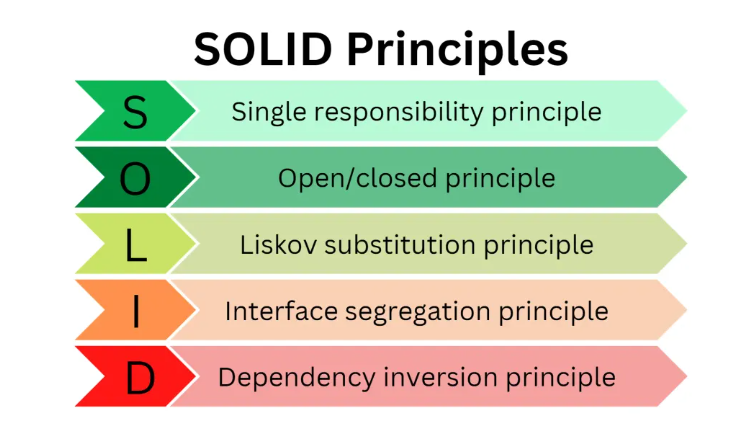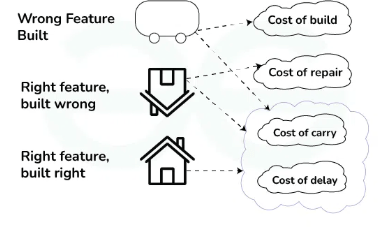
- Introduction to Software Engineering Principles
- DRY (Don’t Repeat Yourself) Principle
- SOLID Principles in Software Engineering
- KISS (Keep It Simple, Stupid) Principle
- YAGNI (You Aren’t Gonna Need It) Principle
- Separation of Concerns in Software Design
- Agile and Scrum Methodologies
- Code Quality and Refactoring Principles
Introduction to Software Engineering Principles
Software engineering is designing, developing, and maintaining software systems. The dynamic field requires a blend of technical expertise, creativity, and a structured approach to ensure that software solutions are efficient, scalable, secure, and maintainable. A set of established principles guides software engineers in creating high-quality software. These principles ensure the code is functional, easy to maintain, scalable, and adaptable to future changes. The foundation of software engineering is built upon sound principles that foster good coding practices, problem-solving, and efficient collaboration between teams. Web Designing and Development Courses principles ensure software is created efficiently, without unnecessary complexity or waste. A core aspect of software engineering involves applying best practices throughout the software development lifecycle, from initial design to deployment and maintenance. These principles, including SOLID, DRY, KISS, YAGNI, and Separation of Concerns, represent effective software design, development, and management guidelines. Additionally, concepts like Agile and Scrum methodologies, code Refactoring Principles, and test-driven development (TDD) help create reliable and efficient software. The principles mentioned form the foundation for building robust systems that adapt to the ever-changing needs of businesses and users.
DRY (Don’t Repeat Yourself) Principle
The DRY principle emphasizes the importance of reducing repetition in software development. The idea is simple: every piece of knowledge or logic should be represented in a single place in the system. Repetition of logic across multiple parts of the codebase can lead to maintenance challenges, as fixing a bug or changing one location might necessitate changes in several other places, increasing the risk of introducing errors. DRY encourages developers to abstract standard functionality and reuse it rather than replicating code. Applying the DRY principle leads to cleaner, more maintainable code that is easier to update. It reduces the size of the codebase and minimizes the chances of inconsistency. The principle is applicable across various contexts, including code, database schema, and configuration files. For instance, if a function or method is repeated in different application areas, it should be refactored into a reusable function. In addition to reducing duplication, the DRY principle also promotes the reuse of components, reducing complexity and enhancing code readability. However, Django vs Node.js is essential to balance avoiding unnecessary repetition and over-engineering. While DRY promotes code reuse, it is also crucial not to abstract prematurely or excessively. A delicate balance ensures the system remains flexible without becoming too rigid or challenging to maintain.
Master Web Development skills by enrolling in this Web Developer Certification Courses today.
SOLID Principles in Software Engineering
The SOLID principles are five design principles to create more maintainable, scalable, and understandable software. The SOLID principles help developers create flexible, modular, and maintainable software systems. By following these principles, developers can ensure that their systems are easy to extend and modify without introducing bugs or breaking existing functionality. The acronym SOLID stands for:
- Single Responsibility Principle (SRP): This principle dictates that a class should have only one reason to change, meaning Front-End Developer Salary in India should have only one job or responsibility. By adhering to SRP, software components become easier to understand and maintain since changes to one part of the system are less likely to impact others.
- Open/Closed Principle (OCP): According to the OCP, software entities such as classes, modules, and functions should be open for extension but closed for modification. This means new functionality should be added by extending existing code rather than modifying it. It ensures that existing software remains stable and that new features can be integrated without breaking existing functionality.
- Liskov Substitution Principle (LSP): This principle states that objects of a superclass should be replaceable with objects of a subclass without affecting the program’s correctness. By adhering to LSP, developers can ensure that inheritance hierarchies are designed so that subclasses are compatible with their base classes.
- Interface Segregation Principle (ISP): The Interface Segregation Principle (ISP suggests that clients should not be forced to depend on interfaces they do not use. This principle encourages the jQuery vs JavaScript of smaller, more specific interfaces rather than large, general-purpose ones. This improves code clarity, reduces unnecessary dependencies, and enhances maintainability.
- Dependency Inversion Principle (DIP): DIP promotes the idea that high-level modules should not depend on low-level modules but should depend on abstractions. Additionally, abstractions should not depend on details, but details should depend on abstractions. This principle encourages loose coupling and reduces the impact of changes to the system.
- The YAGNI principle reminds developers to avoid building functionality that isn’t immediately required. It emphasizes that developers should not add features or components unless explicitly needed.
- This principle helps reduce the risk of overcomplicating the system by anticipating future requirements that may never materialize. Front-End Developer Salary in India, the focus should remain on delivering what is needed at the current stage.
- The YAGNI principle works hand-in-hand with Agile methodologies, as it encourages developers to work incrementally and only implement features that bring value in the short term.
- By resisting the urge to build features that are not currently necessary, developers can avoid wasting resources and focus on delivering functional and usable software promptly.
- In practice, the YAGNI principle prevents scope creep and reduces technical debt. It helps ensure that teams focus on high-priority tasks and avoid spending time on features that might not be useful or relevant to the project’s immediate goals.
- Agile is a set of principles for software development that promotes iterative development, collaboration, flexibility, and customer-centric solutions. The Agile Manifesto emphasizes values like individuals and interactions, working software, customer collaboration, and responding to change over processes and tools. The Agile approach focuses on delivering small, functional increments of software in short time cycles, known as sprints.
- Scrum is one of the most widely used Agile frameworks. It organizes the development process into time-boxed sprints, typically lasting two to four weeks. During each sprint, teams work collaboratively to complete predefined tasks. Scrum roles include the Product Owner, Scrum Master, and Development Team, React Native Made Simple: Beginner’s Step-by-Step Guide with specific responsibilities.
- Scrum also emphasizes regular meetings such as the Sprint Planning, Daily Stand-ups, Sprint Review, and Sprint Retrospective to ensure progress and identify areas for improvement.
- Agile and Scrum methodologies foster a dynamic and responsive development environment, encouraging teams to adapt quickly to changes and deliver value incrementally. These frameworks have been proven to increase productivity, improve communication, and enhance customer satisfaction in software development.

Enhance your knowledge in Web Development . Join this Web Developer Certification Courses now.
KISS (Keep It Simple, Stupid) Principle
The KISS principle advocates simplicity in software design. It stresses that systems should be designed in the simplest way possible while fulfilling their functional requirements. Complex solutions may initially seem appealing, but they often result in maintenance, testing, and modification difficulties. The KISS principle encourages developers to avoid overengineering, making the codebase intuitive. Keeping things simple leads to better maintainability, fewer bugs, and faster development cycles. The KISS principle can be applied across all aspects of software development, from architecture and design to coding and Web Developer Certification Courses. For example, when writing code, developers should prefer easy-to-understand and implement solutions rather than unnecessarily complex approaches. In design, simpler user interfaces often lead to better user experiences, as users can easily navigate the system. Adhering to the KISS principle often involves asking whether a more straightforward solution could achieve the same result. It also means avoiding unnecessary features, extra dependencies, or overly complicated algorithms unless necessary. Simplicity helps reduce misunderstandings and makes collaboration more effective in a team setting.
YAGNI (You Aren’t Gonna Need It) Principle
Equip yourself with real-world skills and projects in web development through this top-rated Web Developer Certification Courses .
Separation of Concerns in Software Design
Separation of Concerns (SoC) is a software design principle that promotes dividing a system into distinct components, each responsible for a specific functionality or concern. By separating concerns, developers can isolate functionality, making the system easier to understand, maintain, and modify. For example, a web application could separate its concerns into layers such as the presentation layer, the business logic layer, and the data access layer. One key benefit of SoC is that it reduces the interdependency between different system parts. Changes to one component, such as the database layer, do not affect other elements, such as the user interface. This modular approach makes the software easier to test, refactor, and extend. In web development, frameworks like MVC (Model-View-Controller) encourage SoC by separating data, user interface, and control logic. By adhering to SoC, developers can create more organized, flexible, and reusable systems that are easier to scale and maintain.
Preparing for a job interview? Explore our blog on Web Development Interview Questions and Answers!
Agile and Scrum Methodologies
Code Quality and Refactoring Principles
Code quality is a critical aspect of software engineering. High-quality code is functional but also clean, maintainable, and scalable. It follows best practices such as proper naming conventions, clear comments, and consistent formatting. High-quality code involves applying principles such as SOLID Principles, DRY, and KISS, and regularly reviewing and refactoring code to remove inefficiencies and potential issues. Refactoring is restructuring existing code to improve its design without changing external behavior. Refactoring helps improve code readability, reduce complexity, and eliminate code smells, such as duplicated logic or long methods. Refactoring Principles should be done regularly to ensure the codebase remains clean and maintainable as the software evolves. Maintaining code quality requires ongoing effort. Web Designing Training involves conducting regular code reviews, writing automated tests, and using tools such as linters and static analysis to detect potential issues. High-quality code reduces the likelihood of bugs, makes future enhancements easier, and improves collaboration among developers.





